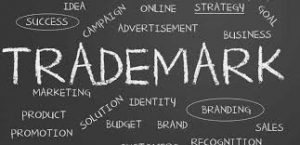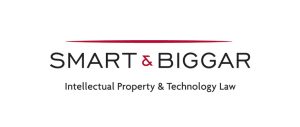This blog is provided by Invest Ottawa’s proud sponsor, Smart & Biggar, as part of our Expert Series. View the full series here.
Authored by: Jamie-Lynn Kraft, Associate, Smart & Biggar

5 Steps to consider when creating value with your brand.
Savvy entrepreneurs understand that a strong brand adds real value to a business. Whether you are starting a new business or building an existing one, the selection and protection of your trademarks are critical to success
1. Powerful marks lead to valuable brands
A trademark (or mark for short) can be a word, a logo, a symbol, or another unique element that distinguishes the products and services of one company from those of another. If a trademark is not strong enough, it cannot perform this key role. The first step in the selection process is choosing a powerful mark.
Imagine, for example, that you sell soup and you promote your product under the trademark BEST SOUP. No matter how good your soup is, you will always have a hard time protecting your trademark and building brand value. The reason for this is that there is nothing striking or unique about the trademark BEST SOUP which would assist customers in differentiating your soup from other soups in the marketplace. It simply describes the product. If, on the other hand, you choose an arbitrary or coined word for your trademark, it will be striking. Consumers will remember your striking mark and will be better able to identify it as belonging to you. That is the essence of a powerful mark.
2. Search early, search often for your marks
The second step in the selection process is the all-important search. “Search early, search often” should be the motto for all good marketing teams. There is no sense in attempting to build brand value in a trademark which is already used by one or more companies in your field. At best, you are wasting your time and money (you can’t protect a word that everyone else is using). At worst, you are infringing the rights of others and exposing yourself to liability. A well-thought-out search strategy in partnership with your trademark counsel can assist in identifying generic words (which cannot be protected) and conflicting rights (which ought to be avoided).
3. Protect your marks and your brand
Once you have selected your trademark for your brand, you must protect it. There are four key steps in the protection process: file, use, monitor and enforce.
If a trademark is important to you and you want to prevent its use by others in your field, file an application to register the trademark in the countries that are important to you. Work with your trademark counsel to develop a filing strategy which identifies (1) what marks you should file; (2) where you should file; and (3) with what products and services you should file. Allow your sales to drive your filing strategy, but also think with a view to the future. Remember, many countries have a “first-to-file” trademark system, so it is important to file early in countries that matter so nobody else beats you to the punch. A trademark registration is a powerful tool since it gives you the exclusive right to use your trademark in the countries where it is registered.
4. Once you have a mark, use it or lose it
Next, in order to protect your trademark, you must use it. If you don’t use a trademark, you lose it. It is also important to ensure that you use your trademark as a trademark. This means you must make it stand out by displaying it in a different font, using it as an adjective (never a noun), and employing the proper marking symbols where appropriate (TM and ®). Failure to use your trademark as a trademark could result in your brand becoming generic. Think: “escalator”, “linoleum”, “cellophane”, which were all at one time trademarks but have since fallen into generic use.
5. Watch your marks and enforce your rights
Filing and using your trademark, however, is not enough to protect it. You must monitor the marketplace to ensure that no one else is infringing your trademark rights or using your mark generically. If multiple companies use the same or similar mark for the same product, that mark no longer fulfills its key role of distinguishing the products of one company from those of another. When that happens, the trademark cannot be protected and will instead be available for all companies to use.
Of course, once you spot infringing or generic use in the marketplace, you must take steps to stop it. Work with your trademark counsel to determine your rights and what steps you should take to enforce them.
Following these critical steps in the selection and protection process will help you build a powerful brand and create business value.
Smart & Biggar company description:

Smart & Biggar is Canada’s largest firm practising exclusively in intellectual property and technology law, with offices in Ottawa, Toronto, Montreal, Vancouver, and Calgary. Related to Fetherstonhaugh – Canada’s largest patent agency firm – through common partners, offices and people, we have been leaders in intellectual property and technology law for over a century.
Intellectual property rights are only valuable if they can be protected and exploited intelligently. At Smart & Biggar/Fetherstonhaugh, they are devoted to maximizing the value of their clients’ intellectual property and technology assets. While they are proud that they have been selected repeatedly as Canada’s leading intellectual property firm in numerous Canadian and international surveys, they recognize that their success is best measured by their client’s success.
To learn more visit their website at www.smart-biggar.ca or contact them at 613.232.2486 or ottawa@smart-biggar.ca.






